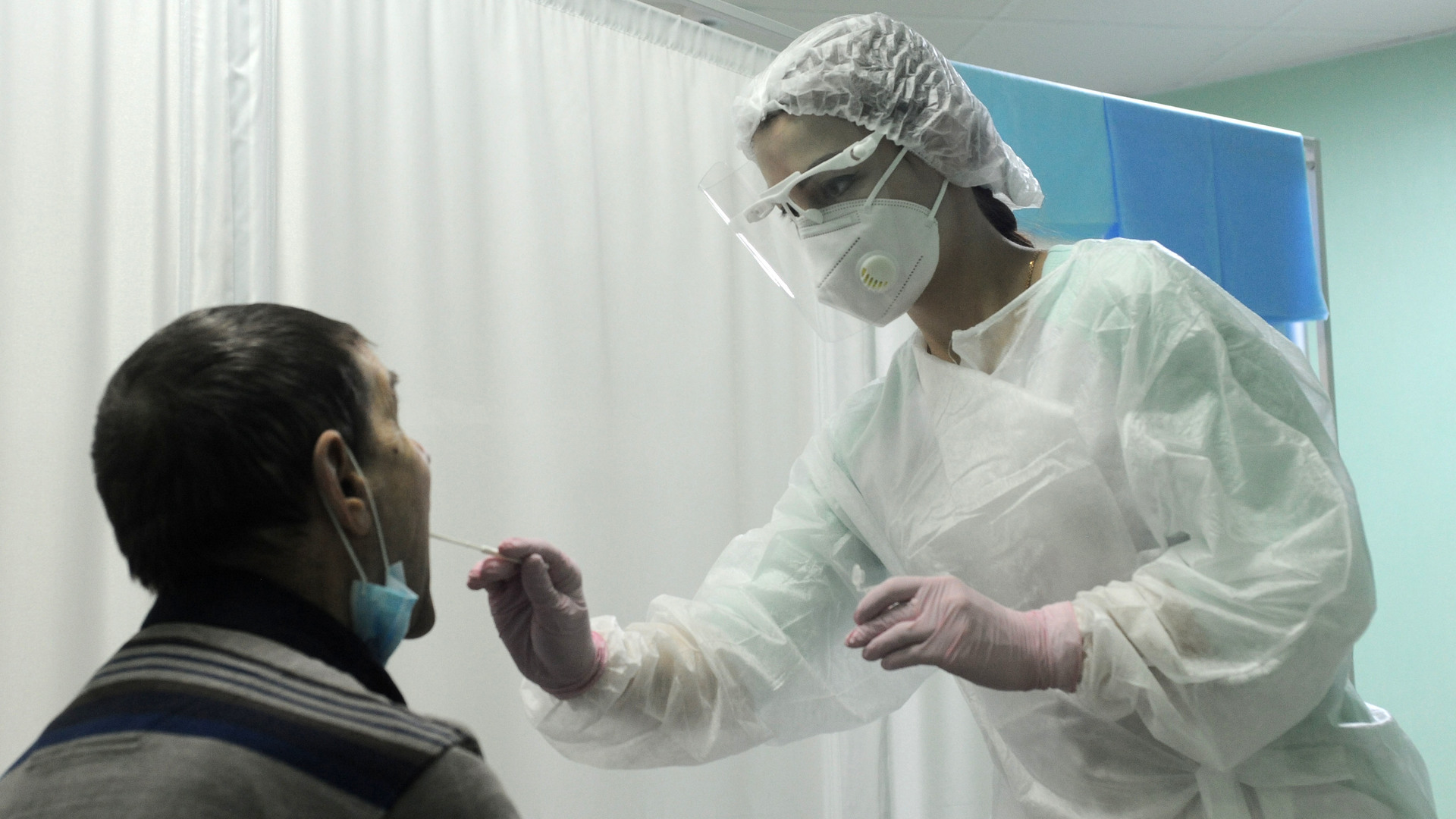Over the past day, 25,173 new cases of coronavirus were detected in Russia, which was the highest figure since the beginning of the pandemic.
On Sunday and Saturday, 24,581 and 24,822 new cases of COVID-19 were recorded in the country, respectively.
In total, since the beginning of the pandemic in Russia, 2 114 502 cases of coronavirus infection have been detected in 85 regions of the country, 1 611 445 people have recovered, including 16 002 in the last 24 hours.
At the same time, 36,540 people have died from complications that developed against the background of coronavirus infection and concomitant diseases.
During the day, the number of deaths increased by 361.
Most of all new cases of coronavirus in 24 hours were detected in Moscow - 6866. In St. Petersburg - 2926, in the Moscow region - 971, in Nizhny Novgorod - 447, in Sverdlovsk - 389.
According to the Moscow headquarters, 1,341 patients with coronavirus infection were hospitalized in the capital per day.
429 people are on ventilators in Moscow hospitals.
The regions with the lowest growth rate of COVID-19 were Dagestan (0.5%), Kalmykia and Khanty-Mansi Autonomous Okrug (0.6%), as well as Mari El (0.7%).
According to Rospotrebnadzor, since the beginning of the pandemic in the Russian Federation, more than 72.9 million laboratory tests have been carried out for a new type of coronavirus infection, including 520 thousand in the last day.
481.6 thousand people remain under medical supervision.
Common mistakes when taking tests for COVID-19
Virologists talked about the features of taking a coronavirus test.
So, experts recalled that for three hours before delivery, you should not eat, drink, smoke, and also brush your teeth.
“If we take a nasal swab without observing certain rules: we inject it shallowly into the nasal passages, or, for example, the patient has blown his nose or washed his nose, then the sample will be uninformative,” Tatiana Romanenko quotes RBC as therapist, head physician of the clinic “Your Doctor” ...
In addition, you should not rinse your mouth with an antiseptic solution.
© Alexey Sukhorukov / RIA Novosti
Galina Kozhevnikova, Head of the Department of Infectious Diseases of the RUDN University, emphasized that before taking the biomaterial, the patient should "neither drink, nor smoke, nor brush his teeth."
“If he does this, then you will not find any pathogens,” she stressed.
At the same time, the virologist, professor of Moscow State University, Doctor of Biological Sciences Alexei Agranovsky noted the importance of the quality of the samples themselves, which should not get any foreign impurities, for example, from a dirty pipette tip.
Rospotrebnadzor on the "third wave" of COVID-19
Deputy Director of the Central Research Institute of Epidemiology of Rospotrebnadzor, Academician of the Russian Academy of Sciences Vadim Pokrovsky expressed the assumption that the next waves of coronavirus will be weaker than the previous ones.
So the specialist commented on the statement of the special envoy of the World Health Organization (WHO) David Nabarro.
Earlier, Nabarro said that a third wave of coronavirus infection COVID-19 could occur in Europe in early 2021 if European countries do not build the necessary infrastructure to fight the virus.
Pokrovsky, in turn, noted that there is no term "wave" or "rise" in epidemiology.
He said that we can only talk about an increase in the number of cases of coronavirus infection.
"And this is quite possible, but there are factors that prevent such a development of events," the radio station "Moscow Says" quotes Pokrovsky.
According to him, "Europe already knows well the methods of preventing the spread."
“I think that everything that is being done now will, in one form or another, remain until spring, but in addition, the number of people who have already had a coronavirus infection is growing, and they are unlikely to be infected again,” the representative of Rospotrebnadzor believes.
At the same time, he noted that the rise in incidence will be "regularly in the fall and spring", and also "partially" in the winter, since at this time people gather in large numbers in closer rooms.
“This autumn-winter rise will be observed in the future.
The only question is how big it will be.
Probably, you can compare it with the rise of other acute respiratory viral infections, but it is unlikely that there will be something as unusual as when the virus came for the first time, ”Pokrovsky concluded.

